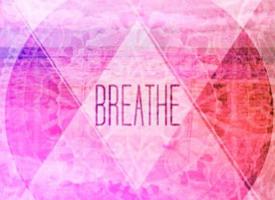Mindfulness and Calming the Mind Part 2

Last week I set some practices around eating and showering that were Active Practices of Mindfulness. This week I am going to talk about different types of Passive Practice.
Passive practice is commonly known as Sitting. This is the formal practice of Mindfulness, which can be done alone or in groups. For this you need to sit and practice quiet internal observation of thoughts and body sensations, without reacting to them.
Important points to remember when sitting:
-
Regular practice, time and place. If you can get in the habit of practicing at the same time and place your practice will get stronger, deeper and easier to maintain.
-
Correct posture. Sitting straight, but relaxed not rigid, neck straight, back straight, feet flat on the floor, hips higher than knees if possible, unless sitting on the floor in Lotus (cross legged).
-
Comfortable clothing. Preferably loose comfy clothes, but really it can be done wearing anything at anytime.
There are 3 Styles of Passive Practice and today we are going to talk about 2:
-
Progressive Muscle Relaxation (PMR) – For anyone with agitation or poor concentration, you may need to begin with PMR. To practice PMR, you will need tense and relax every part of your body systematically. So it is a good idea to start from the top of your body and work your way down to your feet and then back up. Notice how that part feels when tensed and how differently it feels to be in a relaxed state.
This takes your attention out of your head (away from unhelpful thinking) and back to the body. The reward for this is relaxation and it is helpful to be relaxed to begin mindfulness training.
-
Awareness of Breath – For this practice you sit and take all of your attention to the entrance of your nostrils. Focus your attention on the Breath as it flows in and out the nostrils. You are focusing on the feeling of the Breath as it flows in and out the nostrils, not thinking about the Breath. Each time youl notice a thought come up you will bring your attention straight back to the breath, so you are not reacting to the thought. You then become the observer of your thoughts and this allows you to see thought for what they truly are, just ‘thoughts’ rather than ‘truths you have about yourself and the world.
The process of repeatedly bringing your attention back to your breath, causes different neural pathways in the brain to be strengthened. You process emotional stress in the under cortex or reptilian brain and we need to use the frontal lobe which is related to rational thinking. This increases focus, concentration and causes you to feel calmer.
Why can you sometimes experience physical discomfort?
• Because you are not used to sitting in this posture and maintaining it.
• Pain (and pleasure) is part of the process. By not reacting to either you are strengthening your ability to tame your mind, manage your states and allow your beliefs about Craving and Aversion to lessen and slowly fade away.
How do you work with thoughts?
-
The brain is a thinking machine. It cannot go blank. Thoughts will arise. This is natural especially when you are a beginner.
-
When you notice a thought, come back to the physical sensation you can feel as the breath passes over that part of the body.
-
When doing a Body Scan bring your awareness back to bodily sensation you can feel in the area you are currently scanning.
Anytime you are not focussing on your breath 100% you will be thinking about something else. When you recognise you are having a thought or being distracted elsewhere, bring your awareness back to what you are meant to be doing now.
How do you work with body sensations?
-
If you feel itchy, some discomfort, a need to stretch or any other type of physical sensation, try not to react to it or give in to it.
-
Moving and scratching is reacting. Try not to react.
-
Just bring your awareness back to the breath, to the nostrils, or the part of the body we are working with.
-
The itch is just like that person or thing that annoys you. If you don’t give it any attention it will eventually go away.
-
If you do react, after the reaction, once again come back to the breath with awareness, in other words just get back on the horse, without judging the fact you reacted.
Enjoy Practicing and next week we will talk about how to Body Scan.




